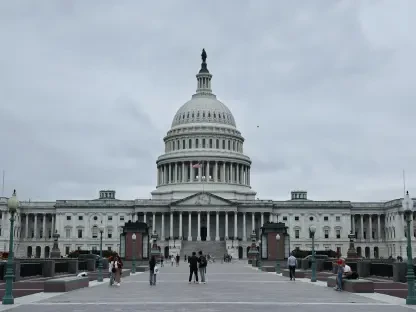The U.S. job market is navigating a phase of recalibration as employers reassess their hiring strategies against a backdrop of economic uncertainties. Despite recent drops in employer confidence, 78% plan to expand their workforce, reflecting a complex interplay of optimism and caution. A notable shift in hiring approach emerges as companies balance expanding workloads, new role creation, and staff turnover against cost-consciousness and changing economic signals.
Economic Shifts Influencing Employer Hiring
The current economic environment presents a multifaceted challenge for U.S. employers, prompting a reevaluation of hiring strategies. As economic conditions evolve, businesses face the critical question of balancing growth aspirations with market realities. Factors such as fluctuating demand, rising inflation, and policy changes are compelling companies to become more deliberate in their recruitment endeavors. These shifts emphasize a cautious optimism, underscoring the need for strategic foresight in workforce planning.
Background and Context
Understanding the broader economic conditions that impact hiring decisions is crucial for grasping the significance of this research. Economic recalibrations have prompted companies to reconsider their workforce needs in light of shifting priorities, cost constraints, and productivity goals. This context highlights the critical nature of the study, focusing on the confluence of economic pressures with employment strategies, providing insights into the changing dynamics of the labor market.
Research Methodology, Findings, and Implications
Methodology
This research adopts a comprehensive methodology that integrates quantitative and qualitative techniques to capture employer sentiments and hiring plans. Data collection involved surveys and interviews with a diverse range of industry sectors, aimed at capturing nuanced insights into employer outlooks. Statistical tools were employed to analyze the data, ensuring an accurate representation of current trends and employer perspectives.
Findings
The findings highlight a distinct trend towards strategic hiring, with a noticeable shift from predominantly entry-level recruitment to an equilibrium between entry-level and mid-level roles. This aligns with employers’ efforts to maximize efficiency and productivity amidst uncertain economic conditions. Furthermore, concerns about reducing workforces have become prevalent, driven by a need to adapt to economic pressures and policy changes while managing costs effectively.
Implications
The implications of these findings are significant for both employers and policymakers. Businesses are encouraged to adopt flexible staffing models and invest in skill development to navigate economic adjustments effectively. Policymakers may consider designing support systems that facilitate smoother transitions for companies and employees alike, thereby enhancing resilience in the labor market. This strategic approach to hiring and workforce management sets the stage for sustained growth and adaptation in an evolving economic landscape.
Reflection and Future Directions
Reflection
Reflecting on the study, the research process revealed the intricacies of employer decision-making amid economic fluctuations. Challenges such as data validation and the variability of market conditions were addressed through rigorous analysis and stakeholder engagement. However, further exploration of sector-specific dynamics could have enriched the study, providing deeper insights into specialized industry trends and responses.
Future Directions
Future research could delve into the long-term impacts of strategic hiring on organizational performance and employee satisfaction. Additionally, exploring the role of emerging technologies and automation in shaping workforce strategies presents a valuable avenue for further investigation. As the economic landscape continues to evolve, continuous monitoring and adaptation will be essential in understanding the full spectrum of implications for the labor market.
Conclusion: Relevance of Strategic Hiring in Evolving Labor Market
The study offered valuable insights into how U.S. employers are adapting their hiring strategies in response to economic shifts. These findings underscored the importance of embracing strategic hiring practices, highlighting a balanced approach between flexibility and foresight. Employers are encouraged to think proactively about their workforce needs, aligning recruitment with broader economic trends. Future endeavors are likely focused on harnessing evolving technologies and fostering workforce resilience to navigate the challenges and opportunities of an ever-changing economic environment.









